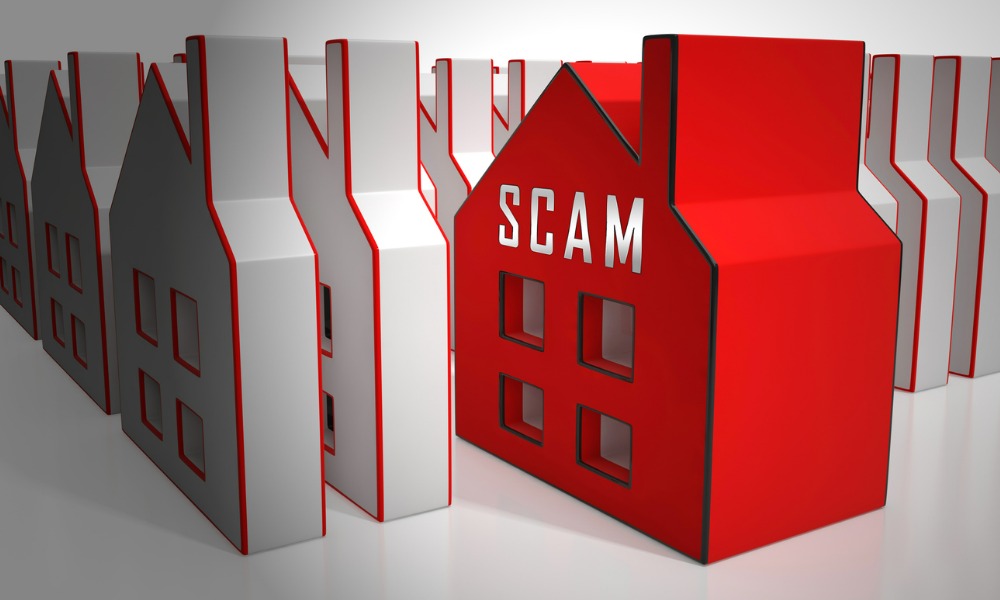There are a variety of fraud types that borrowers should be able to recognize

Mortgage fraud for housing
If you give false information on a loan application for a mortgage you would likely not receive otherwise, you are committing mortgage fraud for housing. Mortgage fraud for housing also includes saying on a loan application that you plan to live in the house when in reality you are not going to.
The reason someone would commit mortgage fraud for housing is for property ownership, or to own a more expensive property, that in other circumstances they wouldn’t qualify for. In order to achieve this, so-called homeowners misrepresent their income and the amount of their debt to be able to qualify for a larger loan or lower their interest rate.
Since misrepresenting yourself is a serious offense, it is important to provide truthful and accurate information when applying for a mortgage. Mortgage fraud for housing can also include submitting inaccurate or false documents.
Mortgage fraud for title
If someone uses your identification, false documents, or stolen identity to change the title on your house, that would qualify as mortgage fraud for title. Mortgage fraud for title is when a fraudster uses your stolen identity and false documents to take out a mortgage on your house. The bank then lends the funds to the fraudster(s) under your name, therefore leaving you to pay off the debt. Fraudsters could also leave you with a mortgage debt you didn’t agree to even if they didn’t change the title of the house. Without your knowing it, they can also take that title.
To prevent mortgage fraud for title, and to ensure everything is in order, you should regularly check your credit rating and the title on your house. If you do become the victim of fraud, you will have to provide evidence that you didn’t authorize the mortgage and the title change.
Mortgage fraud for profit
Mortgage fraud for profit is one of the more complex forms of fraud, typically involving more than one person working together to receive loans for non-existent houses or to inflate the price of a home. Motivated by financial gains, mortgage fraud for profit is usually executed by industry insiders such as: real estate brokers; mortgage brokers; lawyers; title insurers; real estate appraisers; credit agency employees; lenders; and/or outside investors.
Another example of an industry insider that could commit mortgage fraud for profit is a seller or a straw buyer, who makes the purchase for someone else. A straw buyer would usually be approached by someone who cannot get financing due to poor credit, for instance.
For a portion of the profits, a straw buyer could lend their good credit and identity to buy the house. In that case, the real buyer makes the payments and pays the straw buyer for using their credit rating and identity. Usually, the “real buyer” pockets the money and the straw buyer is left with no way to pay for an inflated mortgage on the property—plus the property.
To prevent mortgage fraud for profit, watch your broker for abnormal dealings. They could be attempting to defraud you if they’re pressuring you into making decisions you’re uncomfortable with. Make sure you deal with a registered broker and report all unusual transactions.
Mortgage fraud for foreclosure
Mortgage fraud for foreclosure usually targets low-income homeowners who are vulnerable, at risk of defaulting on their loans, or whose houses are in foreclosure. Among the many types of mortgage fraud for foreclosure are:
- A fraudster will offer you a debt-consolidation scheme that usually prompts you to pay upfront fees and transfer the property title to the scammer;
- You generally get a cash payout from the scammer to pay for immediate bills and remain in the home paying consolidated debt payments or rent to the fraudster;
- You could be left homeless, in debt, or without the property title after the scammer sells or remortgages the property to an accomplice; and
- The scammer ignores bills and taxes and pockets each payment, leading to debt collection against you.
Signs that there is a mortgage fraud
When detecting signs that there is a mortgage fraud, you should be suspicious of any red flags. More than one red flag throughout a transaction should be taken seriously. Usually, signs there is a mortgage fraud include: you are prompted to include fake information on a loan application; you are pressured to leave important areas on a loan application – for instance, a signature line – blank; to get a mortgage, someone offers you cash to use your credit information or your name; the mortgage has increased after being refinanced multiple times; the mortgage is much higher than the property value; and the investment advisor or seller is discouraging you from inspecting the property you are offering to buy.
How to avoid these types of mortgage fraud
To avoid these types of mortgage fraud, never misrepresent your information deliberately when applying for your mortgage. Other ways to protect yourself include: unless you plan to make payments, never add your name to someone else’s mortgage; ensure you don’t make a deposit directly to the seller when making a deposit on a house; only sign papers that you fully understand; consider having a property appraised and inspected or get its sales history through the land titles office prior to buyer; know—always—who it is you are doing business with, i.e., ensure they are accredited or licensed real estate or mortgage professionals; and seek out independent advice from a notary or lawyer.



